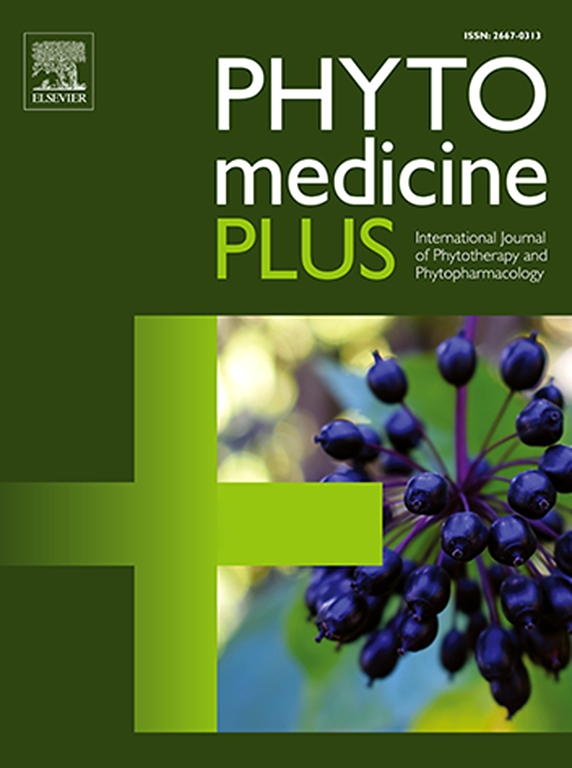Phytomedicinal armamentarium: A review of inula racemosa-derived alantolactones and isoalantolactones in anticancer therapy
Q3 Pharmacology, Toxicology and Pharmaceutics
引用次数: 0
Abstract
Background
Cancer remains a significant health challenge, with increasing incidence and mortality rates attributed to lifestyle factors and environmental pollutants. Despite decades of research, a universal cure for cancer remains elusive. The natural flora, particularly medicinal plants, offers a rich source of bioactive compounds with potential therapeutic benefits. Inula racemosa, a plant used in Ayurveda and Traditional Chinese Medicine, has been recognised for its various medicinal properties.
Purpose
This review aims to summarize the recent research and advances concerning the anti-cancer effects of two key phytoconstituents—alantolactone and isoalantolactone—derived from Inula racemosa. The review focuses on understanding their mechanisms of action and potential as alternative cancer therapies.
Methods
A comprehensive literature search was conducted using databases such as PubMed, Google Scholar, and Web of Science. Keywords like "Inula," "anticancer," and "cell lines" were employed to identify relevant studies. Initially 126 papers were screened in total and the collected data were analysed to assess the anti-cancer properties of alantolactone and isoalantolactone.
Results
Studies indicate that alantolactone and isoalantolactone exhibit significant anti-cancer activities through various mechanisms. These include the induction of apoptosis, regulation of the cell cycle, inhibition of angiogenesis, and suppression of metastasis. The compounds have demonstrated efficacy in vitro and in vivo, affecting various cancer cell lines with minimal toxicity to normal cells.
Conclusion
Alantolactone and isoalantolactone from Inula racemosa show promising potential as anti-cancer agents. Their diverse mechanisms of action and minimal side effects position them as candidates for further research and development. Future studies should focus on clinical trials to establish their efficacy and safety in humans, paving the way for new cancer therapies.

植物医学综述:总状菊衍生的丙酸内酯和异丙酸内酯在抗癌治疗中的研究进展
癌症仍然是一项重大的健康挑战,生活方式因素和环境污染物导致的发病率和死亡率不断上升。尽管经过了几十年的研究,癌症的普遍治疗方法仍然难以捉摸。天然植物群,特别是药用植物,提供了具有潜在治疗效益的生物活性化合物的丰富来源。总状菊是印度草药和传统中医中使用的一种植物,因其多种药用特性而得到认可。目的综述总状菊中两种重要植物成分丙酸内酯和异丙酸内酯抗癌作用的研究进展。综述的重点是了解它们的作用机制和作为替代癌症治疗的潜力。方法利用PubMed、b谷歌Scholar、Web of Science等数据库进行综合文献检索。使用“Inula”、“抗癌”和“细胞系”等关键词来识别相关研究。最初总共筛选了126篇论文,并对收集到的数据进行了分析,以评估阿兰托内酯和异阿兰托内酯的抗癌特性。结果研究表明,丙酸内酯和异丙酸内酯通过多种机制表现出明显的抗癌活性。这些包括诱导细胞凋亡,调节细胞周期,抑制血管生成和抑制转移。这些化合物已经在体内和体外证明了有效性,对各种癌细胞系的影响对正常细胞的毒性很小。结论总状菊丙酸内酯和异丙酸内酯具有良好的抗癌作用。它们的多种作用机制和最小的副作用使它们成为进一步研究和开发的候选药物。未来的研究应该集中在临床试验上,以确定它们在人体中的有效性和安全性,为新的癌症治疗铺平道路。
本文章由计算机程序翻译,如有差异,请以英文原文为准。
求助全文
约1分钟内获得全文
求助全文
来源期刊

Phytomedicine Plus
Medicine-Complementary and Alternative Medicine
CiteScore
3.70
自引率
0.00%
发文量
178
审稿时长
81 days
期刊介绍:
 求助内容:
求助内容: 应助结果提醒方式:
应助结果提醒方式:


